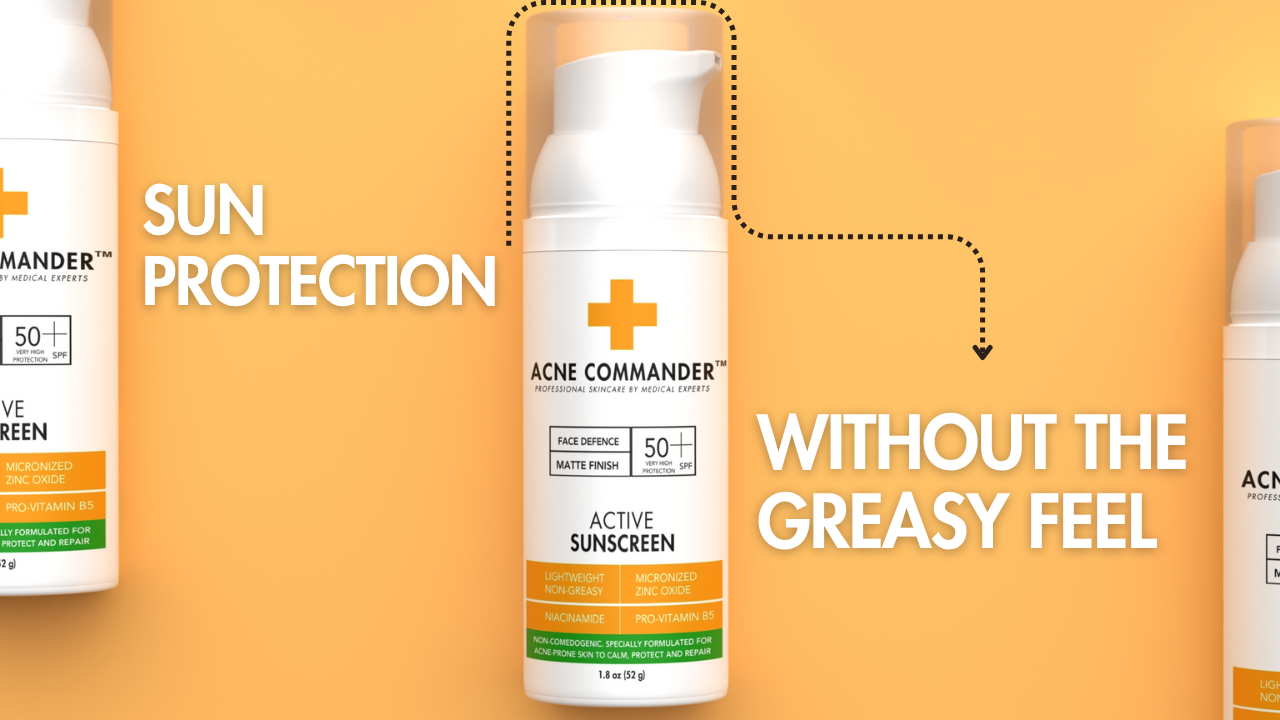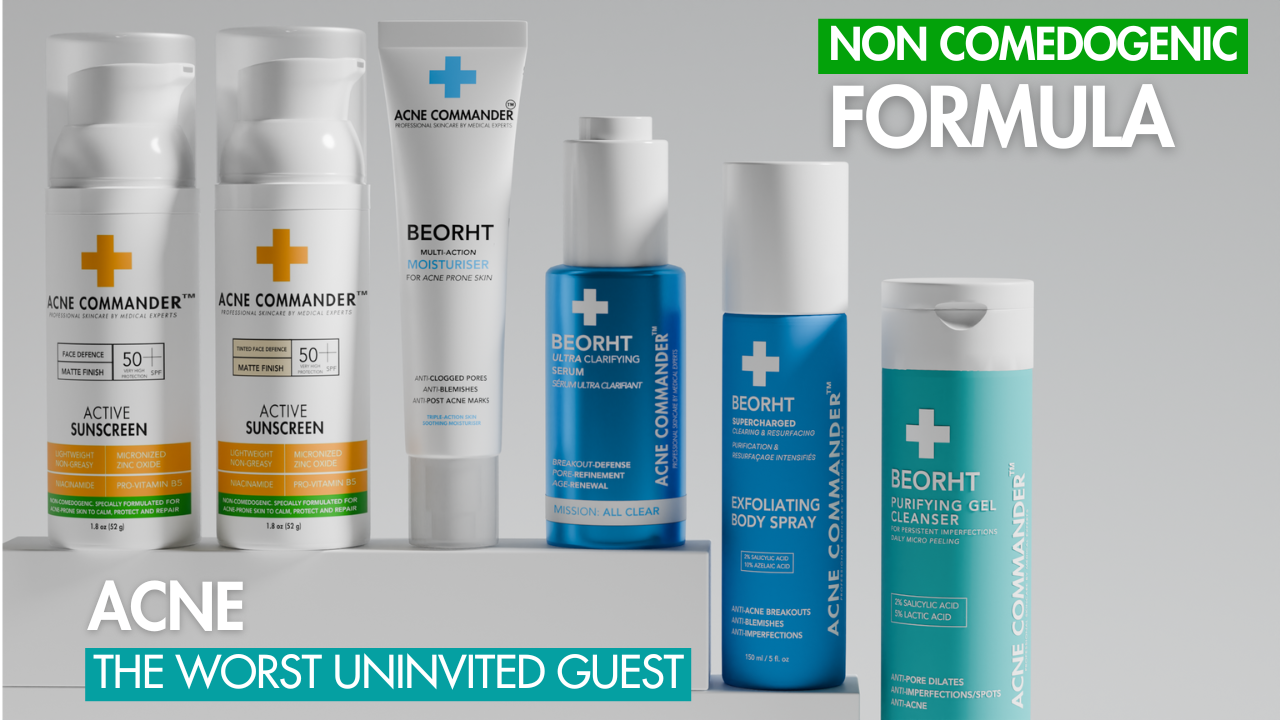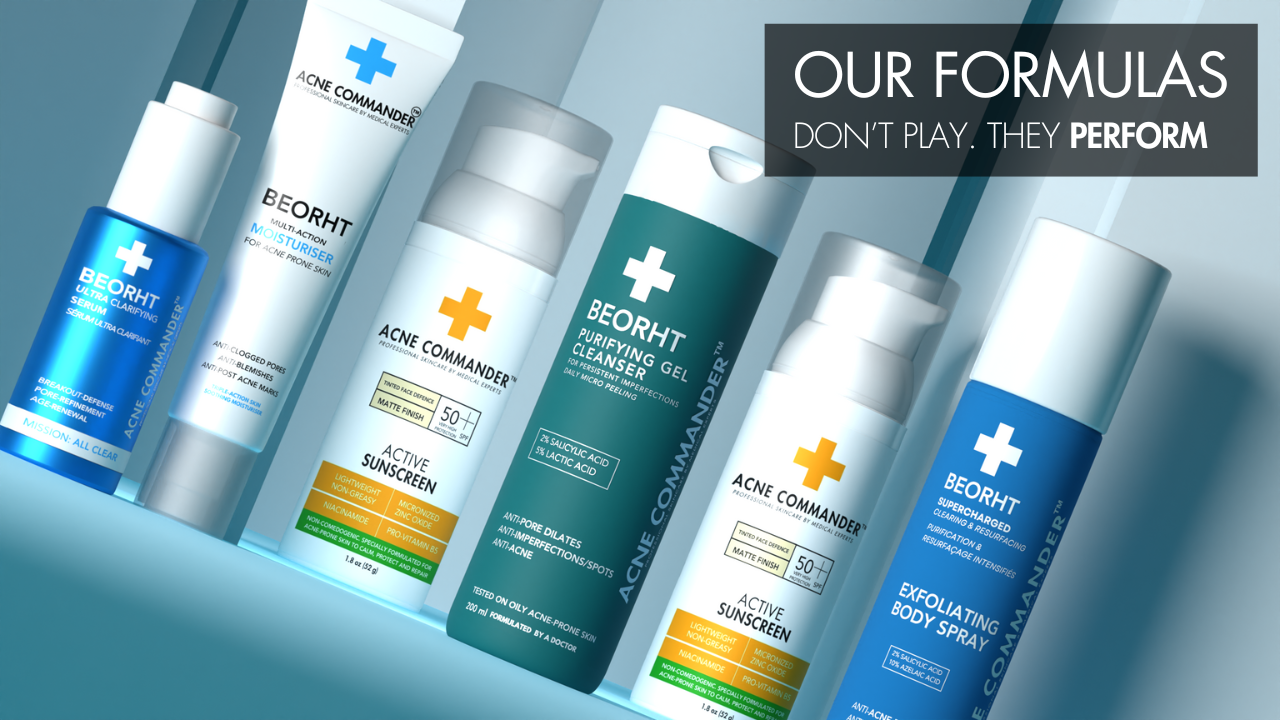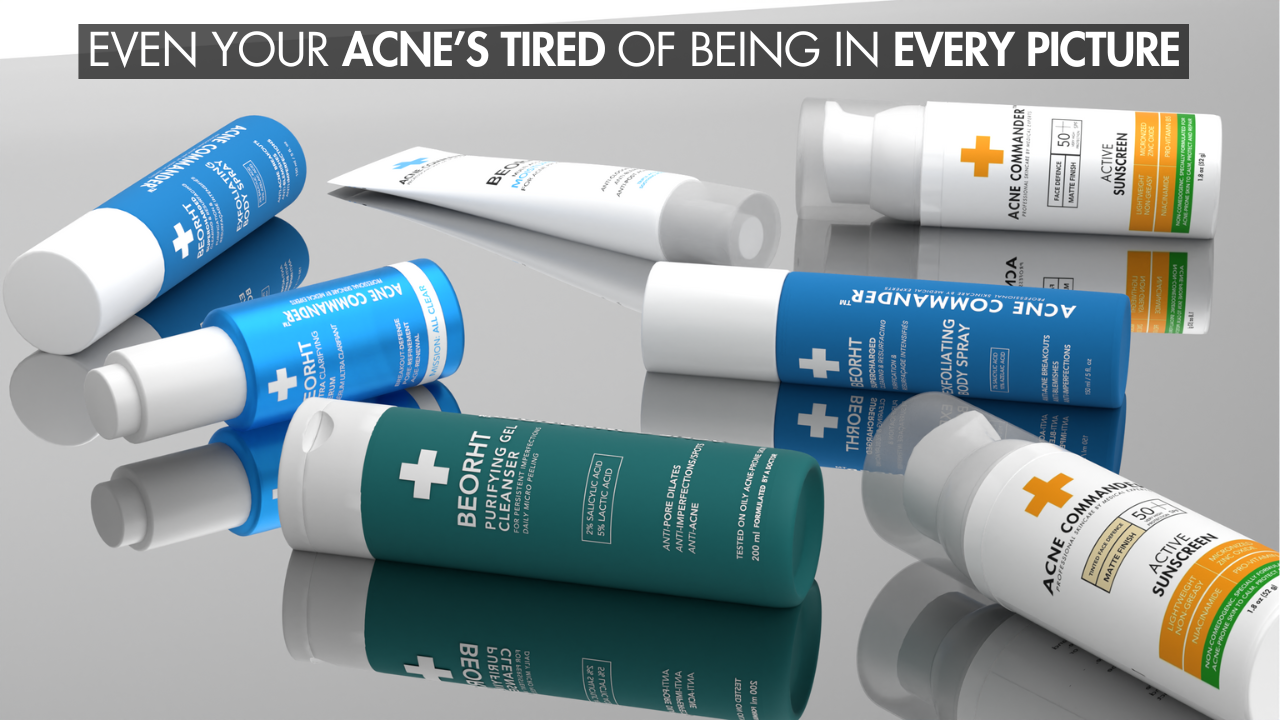Introduction:
For those with acne-prone or oily skin, choosing the right sunscreen is crucial. Oil-free sunscreens are ideal for preventing clogged pores and reducing excess shine. In this article, we’ll guide you on how to know if sunscreen is oil-free and why it’s essential for maintaining clear skin. We’ll also introduce Acne Commander's Broad Spectrum SPF50+ Active Sunscreen, an oil-free sunscreen that’s perfect for acne-prone skin.
What Does Oil-Free Sunscreen Mean?
Oil-free sunscreen means that the formula doesn’t contain oils that can clog pores or cause excess shine. For individuals with oily or acne-prone skin, choosing an oil-free formula helps prevent breakouts while still providing the necessary sun protection.
Acne Commander's Broad Spectrum SPF50+ Active Sunscreen is an excellent example of an oil-free sunscreen that provides effective sun protection without contributing to oily skin or clogging pores.
Why Oil-Free Sunscreens Are Ideal for Acne-Prone Skin:
Oily skin tends to produce excess sebum, which can mix with sunscreen and other products, clogging pores and causing acne. Oil-free sunscreens are specifically designed to hydrate and protect without adding extra oil. They are lighter and more breathable, making them perfect for acne-prone skin.
Acne Commander's Broad Spectrum SPF50+ Active Sunscreen is specifically formulated to be oil-free and non-comedogenic, making it safe for acne-prone skin. It ensures your skin remains hydrated without becoming greasy or clogged.
Explore detailed information for Acne Commander's Broad Spectrum SPF50+ Active Sunscreen. Click Here
How to Know If Sunscreen Is Oil-Free:
-
Check for "Oil-Free" on the Label: Many sunscreens explicitly state if they are oil-free, non-comedogenic, or designed for sensitive skin.
-
Review the Ingredients List: Look for the absence of oils like mineral oil, coconut oil, or shea butter. Opt for mineral-based sunscreens with zinc oxide or titanium dioxide.
-
Feel the Texture: Oil-free sunscreens are usually lightweight and non-greasy. They should feel smooth without leaving a shiny residue.
FAQs
What does "oil-free" mean in sunscreen?
It means the sunscreen does not contain oils that could clog pores or contribute to acne.
How can I tell if a sunscreen is oil-free?
Check the label for “oil-free” or review the ingredients for oils like mineral oil or coconut oil.
Is oil-free sunscreen good for acne-prone skin?
Yes, oil-free sunscreens are ideal for acne-prone skin as they hydrate without causing breakouts or adding extra oil.
What are the benefits of oil-free sunscreen?
Oil-free sunscreen helps control excess shine, prevent clogged pores, and provides the protection needed without exacerbating acne.
How do I choose the best oil-free sunscreen for acne-prone skin?
Choose a sunscreen that is oil-free, non-comedogenic, and provides broad-spectrum protection, like Acne Commander’s sunscreen.
Can oil-free sunscreen help with oily skin?
Yes, oil-free sunscreens help balance oil production, keeping your skin matte while offering protection.
Is oil-free sunscreen lighter than regular sunscreen?
Yes, oil-free sunscreens tend to be lighter and more breathable than their oil-based counterparts.
Can oil-free sunscreen cause dry skin?
No, oil-free sunscreen hydrates the skin without the heavy oils, but it’s designed to balance moisture without over-drying.
What’s the best oil-free sunscreen for acne?
Acne Commander's Broad Spectrum SPF50+ Active Sunscreen is a perfect oil-free sunscreen for acne-prone skin.
Can I wear oil-free sunscreen every day?
Yes, it’s safe to wear oil-free sunscreen daily, especially if you have acne-prone or sensitive skin.
Conclusion:
Oil-free sunscreen is essential for acne-prone and oily skin. Acne Commander's Broad Spectrum SPF50+ Active Sunscreen provides effective sun protection without clogging pores or causing breakouts. By choosing oil-free sunscreen, you can ensure that your skin stays protected and clear.






